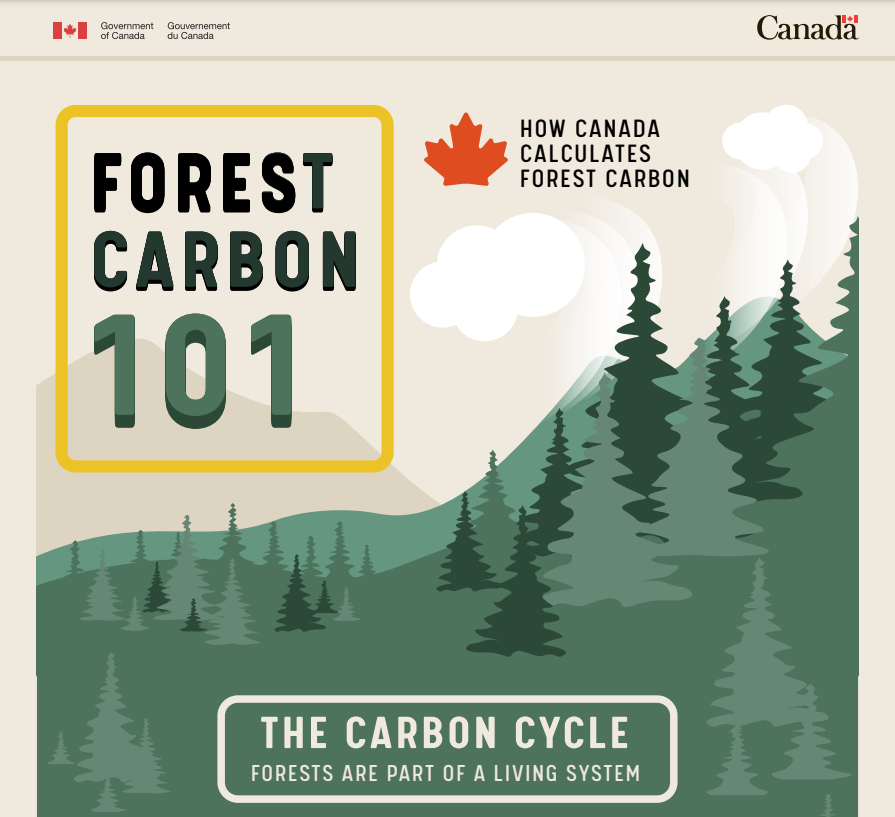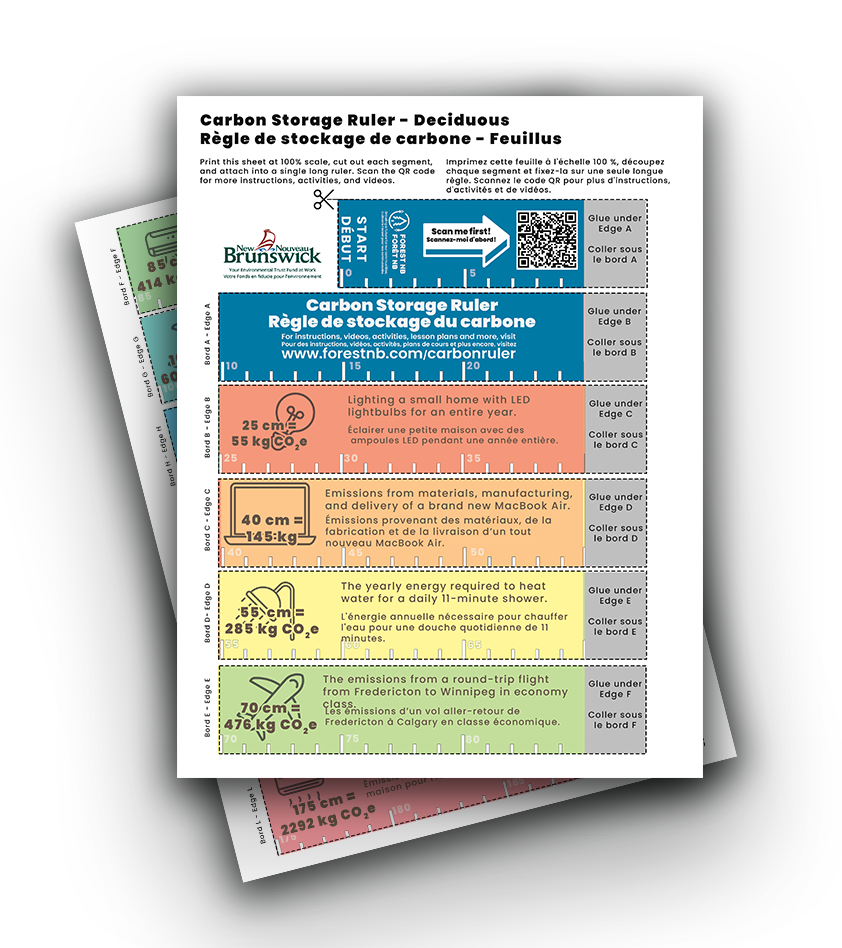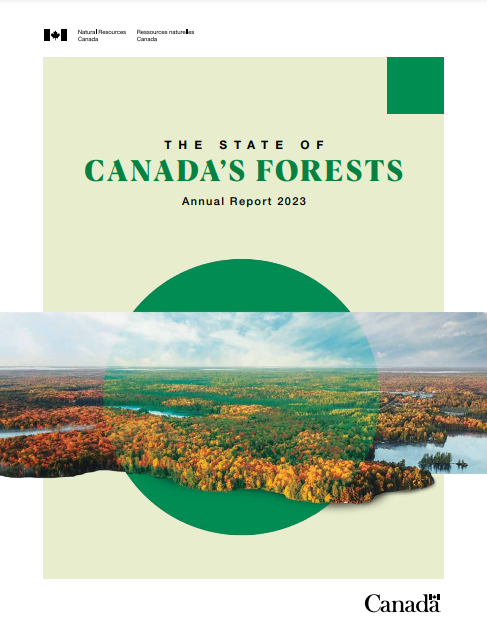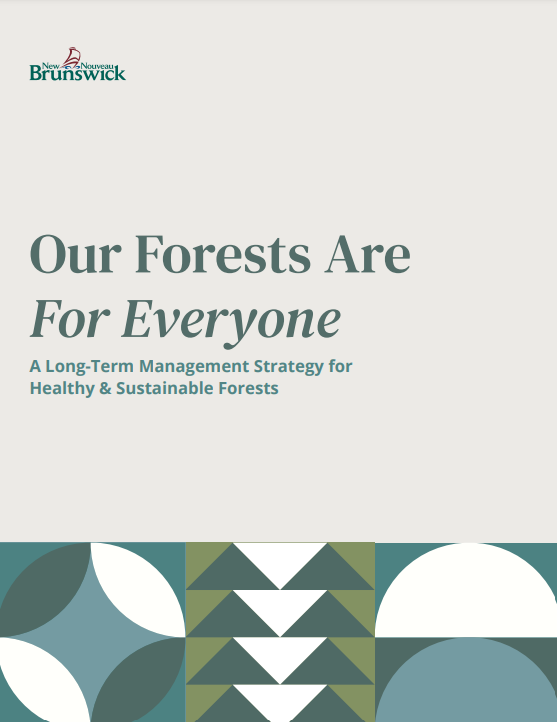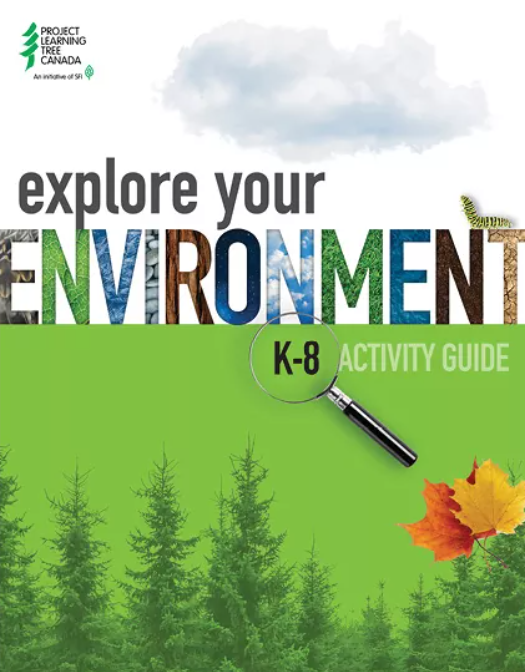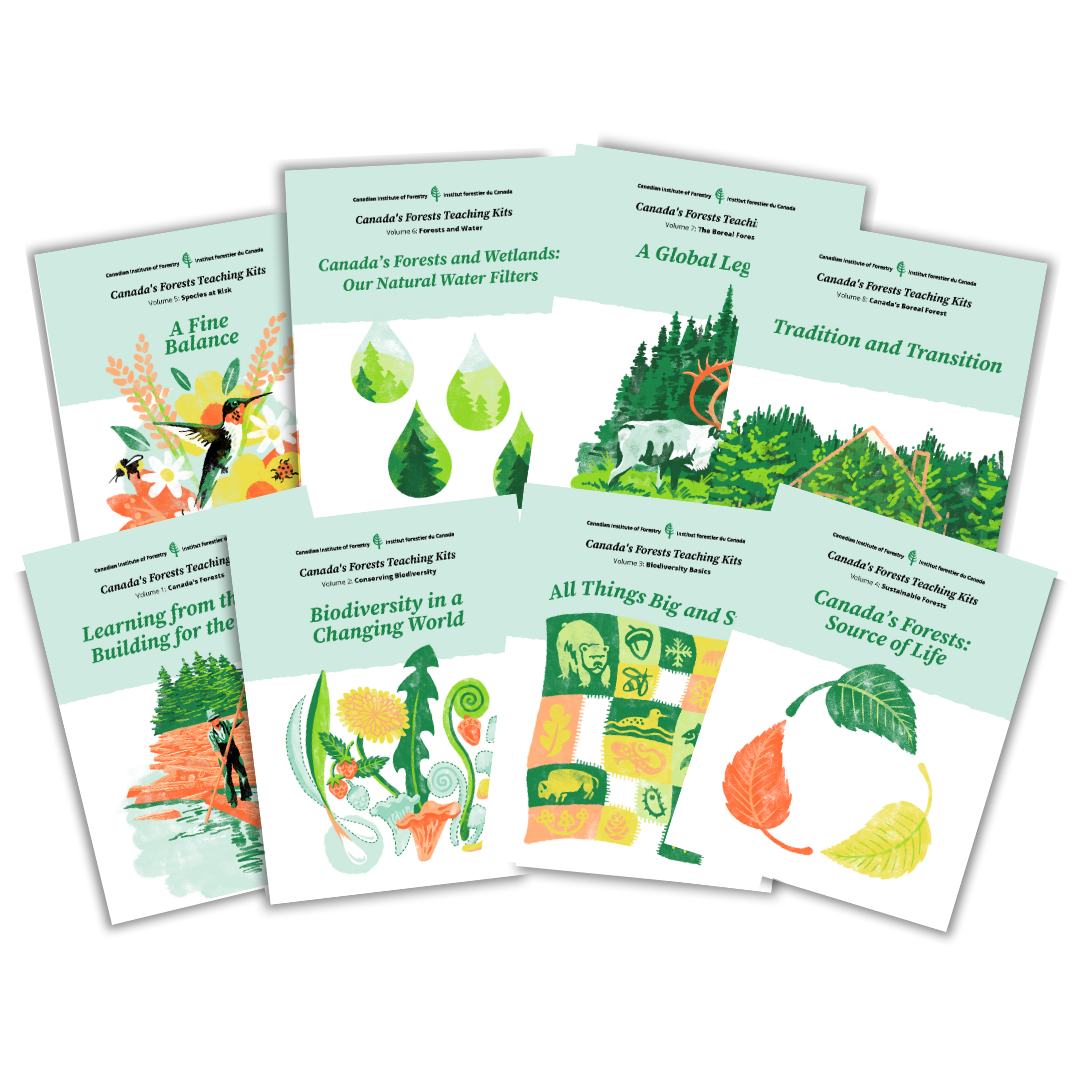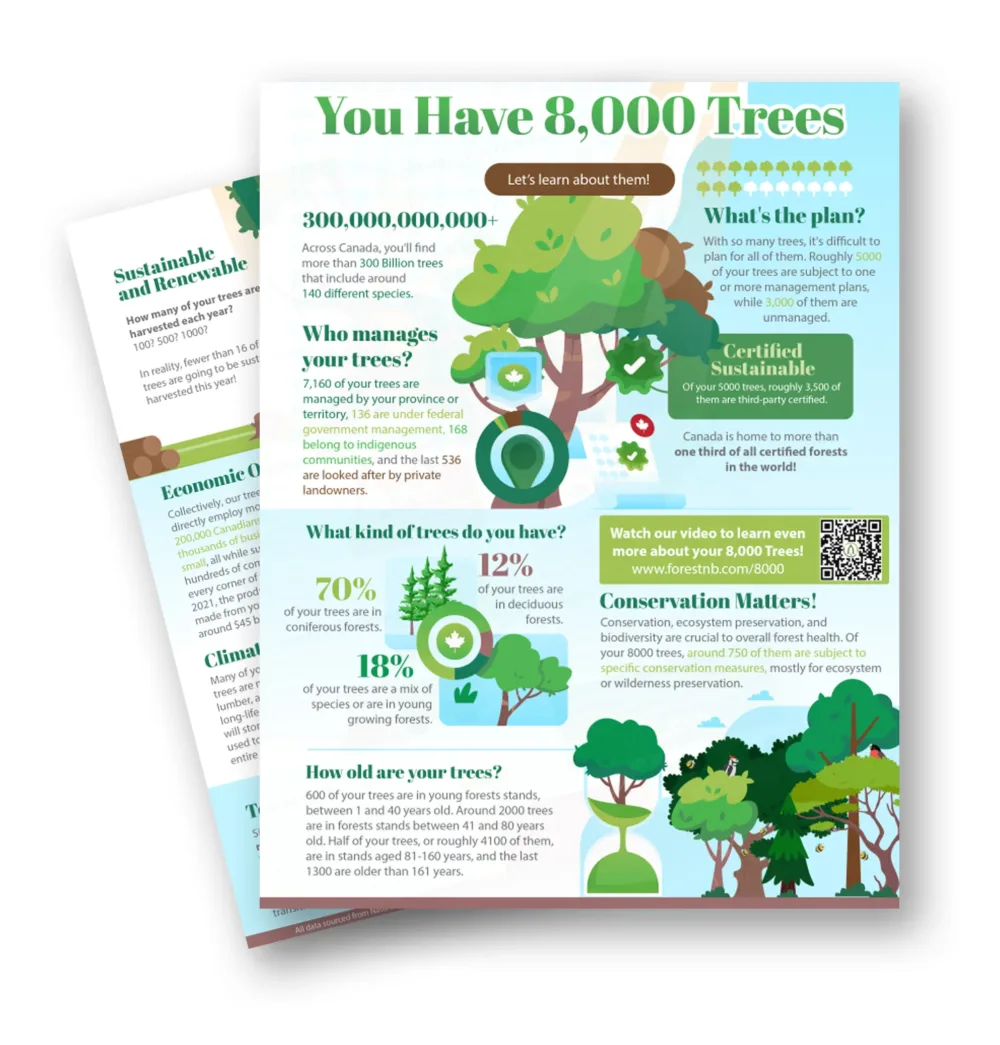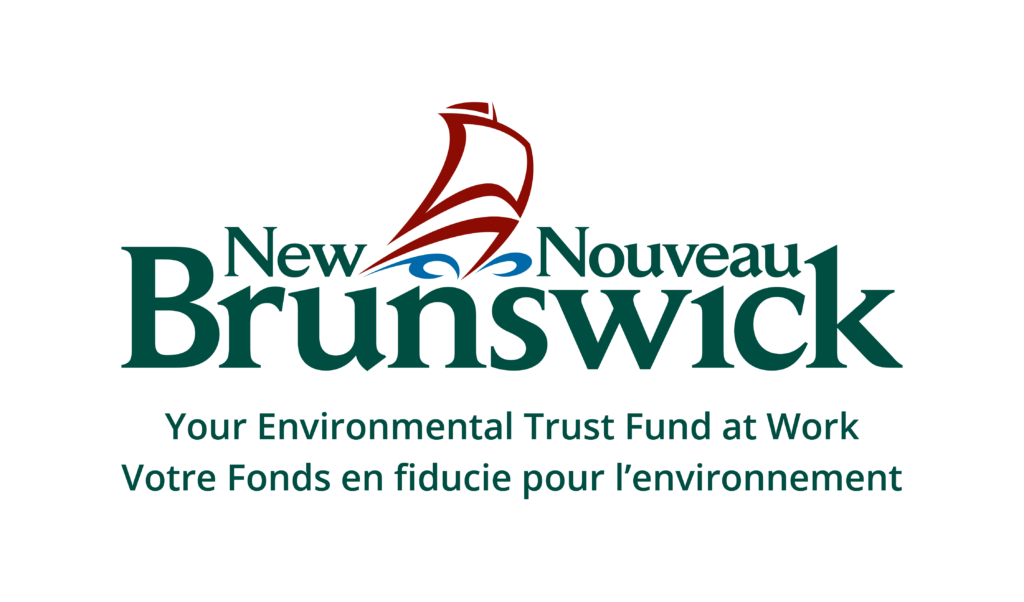How to use the Carbon Storage Ruler
Build your ruler
Using the Carbon Storage Ruler provided by your school, carefully fold and tear each perforated section of the ruler. Glue, tape, or staple the two tabs labelled "A" together, and repeat for the two tabs labelled "B".
You can also use our self-printed versions here. Print the ruler single-sided on plain 8.5x11" paper at 100% scale on your home printer, carefully cut out each section, and glue each section onto the tab of the section above.
Find and identify your tree
Pick a tree that you're able to wrap your ruler around. Look closely and see if it has leaves or needles.
If it has leaves, it's a deciduous tree, but you may better know them as hardwoods. Use the Deciduous side of the ruler to measure this tree.
If it has needles, it's a Conifer, but you might know them as softwoods, or evergreens. Use the Conifer side of the ruler for this tree.
Measure the circumference at 130 cm
Measure the circumference of the tree at 130 cm above the ground. You can use your ruler to help determine the height, or the chest height of an adult. Take note of the circumference of the tree. You may also wish to photograph or do a quick sketch of the leaves or needles to help identify the species of the tree later.
Learn about the equivalent sequestered carbon
Using the circumference of your tree, you can approximate the amount of above-ground equivalent carbon dioxide that has been sequestered by the tree as it has grown. In addition, you can see how that absorbed carbon dioxide compares to some of our common day-to-day emissions, such as driving to-and-from school, or heating our home.
Get Started with this Intro Video
Scenario-specific Intro Video
Lesson outline
Materials:
Carbon Storage Ruler (supplied to your school)
Tape Measure- 10m+ (Optional)
Pencil and Paper
Core Activity: Carbon Sequestration Land Survey
Begin by distributing and assembling your Carbon Rulers. The included video will briefly explain how to assemble and use the ruler, along with basic knowledge of differentiating between coniferous and deciduous trees.
Divide students into groups and find a suitable outdoor area with trees. If wooded areas are inaccessible, see the supplement handout linked below. Have students mark out a 10 metre by 10 metre plot using a measuring tape, or 5 of the supplied carbon rulers. As teams, identify if each tree is coniferous or deciduous and measure the circumference of each tree present that has a circumference of at least 25 cm. Once all trees are surveyed, calculate the total above ground Carbon Dioxide equivalent (CO2e) of the area.
Wrap up and reflect on the importance of forests and trees in storing carbon. Encourage students to think about how land use affects carbon sequestration. See below for additional classroom discussion topics and activities.
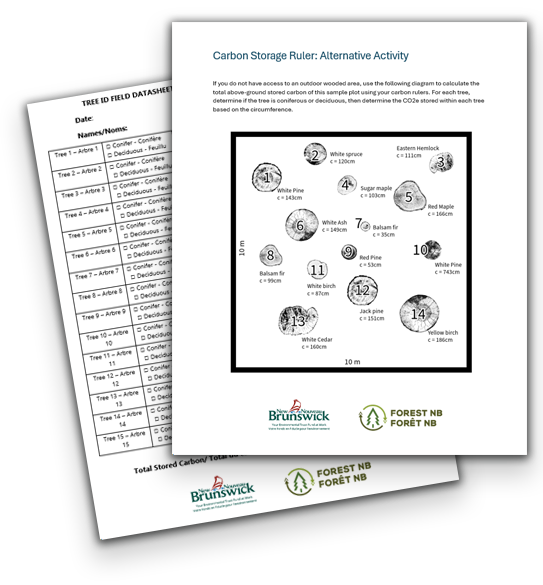
Extra printable resources to help your classroom experience.
Lesson Handout
Make use of our Tree ID Datasheet to help stay organized for the Land Survey Classroom Activity.
Don't have convenient access to a wooded area? You can run the exercise using this handout instead. Students must first identify the listed trees as deciduous or coniferous, then proceed to use their Carbon Storage Rulers to determine the embodied carbon.
Share your Feedback
How'd it go? Please share your thoughts and how the carbon storage ruler was received by your classroom. Your feedback will help us develop more experiential learning opportunities and resources to empower educators to explore the natural resources sector in NB.
Explore The carbon cycle and how Canada calculates forest carbon
Infographic: Forest Carbon 101
Forests are a vital part of the carbon cycle, both storing and releasing this essential element in a dynamic process of growth, decay, disturbance and renewal. At a global scale, forests help maintain Earth’s carbon balance by capturing carbon dioxide (CO2) from the atmosphere when they grow, and releasing CO2 and other greenhouse gases (GHGs) when they decay or burn.
Explore more using the Infographic from Natural Resources Canada.
FAQ
Below you'll find the answers to many of the commonly asked questions about our Carbon Storage Ruler Project.
Have more questions? Contact Andy at communications@forestnb.com
Learn more about our forests with these other great resources!
Canada's State of the Forest Report 2023
Canada has been managing its forests according to the principles of sustainable forest management for many years. The State of Canada’s Forests: Annual Report has been a trusted and authoritative source of comprehensive information on the social, economic and environmental state of Canada’s forests and forest sector for 33 years.
More from Forest NB
Learn more about Forestry in New Brunswick
New Brunswick's history is deeply rooted - pun intended - in sustainable forestry. Our forest sector contributes to and facilitates significant economic activity and employment opportunities in every region of the province. More than 10,000 New Brunswickers directly work in the forest sector, supporting vibrant communities and growing a sustainable future.
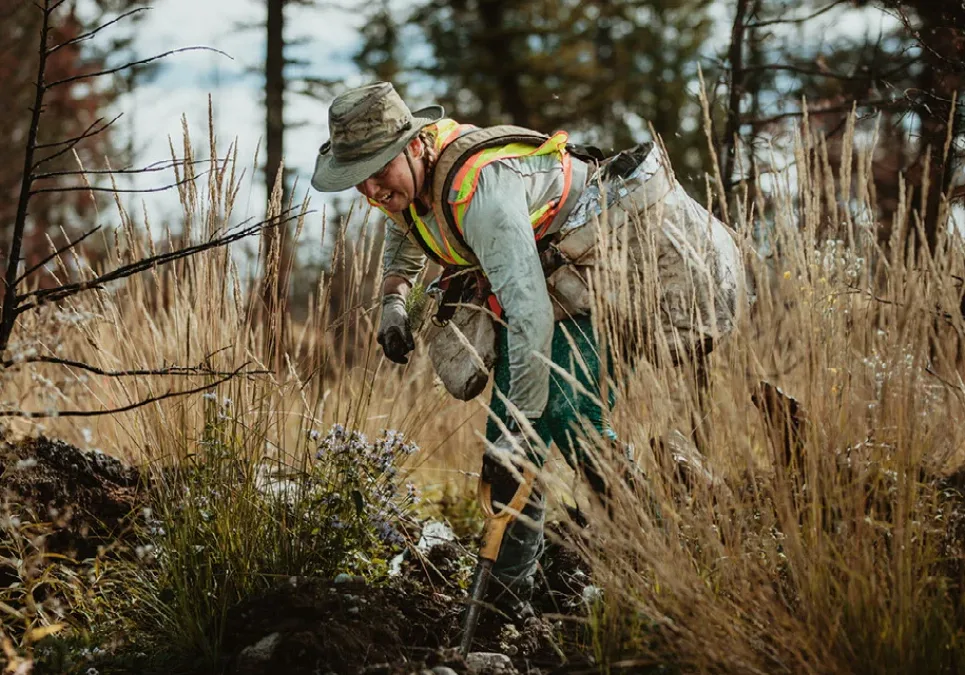
You have 8,000 trees!
Let's learn about them!
Welcome to an engaging glimpse into Canadian forestry through our infographic, shedding light on the thoughtful management of our country's expansive forests. This visual journey explores the careful balance Canada strikes between environmental preservation and resource utilization. Dive into the complexity of sustainable practices, debunk deforestation, and celebrate the nation's commitment to responsible management of our forests.


